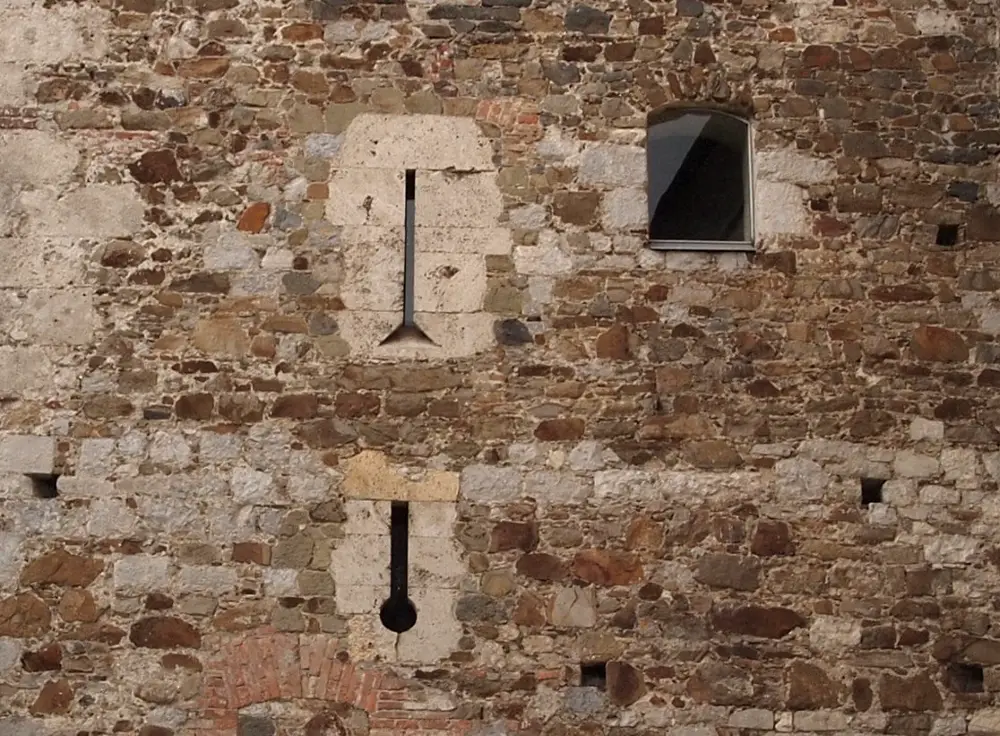Travel
As the STA reported yesterday, so far this year there has been a sharp rise in road deaths compared to 2018, with 15 lives lost in the first month and a half of 2019, in contrast to just five the year before. However, these fatalities are just the tip of the iceberg with regard to poor driving, representing the worst outcome, with police reporting a total of 1,165 traffic accidents for the year to date. The same story also notes that the most common traffic violations are speeding, using a phone while driving, not wearing a seat belt, violations committed by pedestrians, and drink driving, with the latter accounting over 10% of accidents.
Related: What's on in Ljubljana this week
So while this article will show you where to find the speed traps in Ljubljana, it should in no way be taken as an endorsement of speeding, but more an informative text that gives you something to look out for as you motor safely around the town and country, sober and with your phone out of your hands.
Ljubljana has seven roadside cabinets that are able to contain a radar to catch speeding drivers, although the city only owns two such radars, which are thus moved around town. The newspaper Dnevnik reports that in 2018 these were in operation for around 10,000 hours and caught 17,900 drivers moving in excess of the speed limit, while the city’s two mobile radars were able to catch a further 12,502, producing a total of 30,402 speeding tickets for the year.
The road with the most offenders was Roška cesta, with a total of 5,723 who were caught in just 66 days of radar use. In contrast, Dolenjska cesta, in the #2 spot with 5,196 tickets issued, required 121 days to reach this figure. The full report, in Slovene, can be read at Dnevnik.
STA, 5 February 2019 - The flooding caused by heavy rains over the past weekend in the south-west of Slovenia damaged infrastructure at the Škocjan Caves, Slovenia's oldest UNESCO world heritage site, prompting their temporary closure.
According to a post on the Škocjan Caves Facebook profile, the water level at one part of the caves, the Šumeča Cave, rose by over 60 metres. "The last comparable flooding was recoded in 1975," it said.
While the infrastructure of the caves was badly damaged by the swollen river Reka, the caves as such remain undamaged.
The Škocjan Caves Park director, Stojan Ščuka, put the early cost estimate at roughly EUR 50,000. He told the STA that the caves would be reopened to visitors on Friday.
He said the extent of the flood was comparable to the one in 1965. The biggest problem was the material deposited by the river such as branches, logs and mud.
The biggest damage was done to the lighting and electrical wiring, as well as to the fencing and in parts of the walls.
But before repairs can begin, the debris deposited by the river will have to be cleaned up first. There is up to a foot or more mud on some of the paths.
Roughly 50 people, including firefighters, environmentalists, seasonal labour and students, are being involved in the clean-up effort today.
Ščuka does not expect a major loss of revenue due to the closure because the number of visitors is at its lowest at this time of year.
The caves attracted more than 184,000 visitors last year.
The website Ex-Yu Aviation reports that Adria Airways is planning a reduced schedule for summer 2019, with at least nine fewer routes than 2018. In addition to the recently suspended Moscow and Dusseldorf services, the carrier currently has no plans to reintroduce connections to Warsaw, Kiev, Brač, Bucharest, Dubrovnik, Geneva or Hamburg, cutting at least 32 flights per week. Adria also announced that this summer will see just one weekly flight to Paris and Copenhagen, while as yet there’s no news as to whether the two weekly flights to Tel Aviv that were on the books for 2018 will return
However, in a move that some see as making Ljubljana a feeder airport for German hubs the carrier is set to increase the number of summer flights to Munich and Frankfurt. There will also be more seasonal flights to Pristina and Zurich.
The news comes a week after the Civil Aviation Agency stated that Adria Airways current plans mean that it will be able to meet it’s financial liabilities and remain solvent, and thus keep its operating licence.
All our stories about air travel and Slovenia can be found here
The City of Ljubljana’s efforts to make the capital a friendlier, more welcoming and liveable place are not restricted to its award-winning environmental initiatives or support for a packed programme of cultural activities to keep the streets alive. As noted last year with the launch of the Ljubljana by Wheelchair app, and emphasised in our interview with the man behind it, the municipality is also working to make sure the city is more accessible to those with limited mobility. To the ramps, Eurokey bathrooms, disabled access buses and Kavalir electric vehicles we can now add another service – free rental of electric attachments for wheelchairs that convert an ordinary, manually powered wheelchair into a vehicle capable of moving faster and further.
V STIC Ljubljana si gibalno ovirane osebe lahko izposodijo SPEED3X priklop za invalidski voziček. Danes ga je preizkusil prvi uporabnik in bil s storitvijo zadovoljen. ? #dostopnost pic.twitter.com/QMygoDWuhn
— Turizem Ljubljana (@TurizemLJ) January 24, 2019
As Ljubljana Tourism stated in a press release:
The SPEED3X attachment enables people on wheelchairs easier and faster movement and overcoming longer distances. It simply attaches to the wheelchair and the linking element can be adjusted in height and width, making it compatible for practically any wheelchair without any specific adaptation. A full battery has a reach of 40 km, which means a person on a wheelchair can join their friends and family on bicycles or on foot while exploring the city. The user must present their personal document and a deposit, which is returned to them after they bring back the attachment in one piece and without any damage.
At present only two attachments are available for use, and they can be picked up at the Slovenian Tourist Information Centre (STIC) located at Krekov Trg 10 – the first tourist centre in Europe to offer such devices. If you’d like to email or call to ensure one is available, the details are T: +386 (0)1 306 45 83 E: info(at)visitljubljana.si
STA, 31 January 2019 - A major tourism, camping and caravanning fair for the Alpine-Adriatic region and further afield is getting under way at the Ljubljana fairgrounds on Wednesday, featuring 330 exhibitors until Saturday.
The 30th annual Alpe-Adria fair (website) will showcase tourism offerings from Slovenia, Bosnia and Herzegovina, Croatia, Serbia, Montenegro, Italy, Austria, Hungary, the Czech Republic and Nepal.
The fair will see a versatile accompanying programme. Today, Economy Ministry State Secretary Eva Štravs Podlogar will discuss challenges of Slovenian tourism, and panel debates will focus on development of caravanning tourism in Slovenia and on the country's appeal as a gastronomic destination.
The fair will be accompanied by GASTexpo, a leading gastronomic fair in the region which caters mainly for business visitors looking out for drinks, coffee, confectionery, baking, ice cream, wine and hotel and restaurant equipment providers.
5.6 million tourists visited Slovenia in 2018
STASTA, 31 January 2019 - Slovenian tourism growth appears to have continued apace in 2018 after several consecutive record-breaking years, with preliminary figures showing that 5.6 million tourists visited Slovenia in 2018 spending a total of 15.3 million nights in the country.
This follows from Statistics Office figures released on Thursday that significantly exceed those recorded in 2017 - 4.95 million visitors and 12.6 million nights - but are not comparable year-on-year because in early 2018, a new system for registering guests was phased in.
The new system was expected to result in a significant jump since it requires that all providers report data on an ongoing basis; in the old system, only providers with more than 10 beds were required to do that, all others reported just once a year and the reporting rules were looser.
In December alone Slovenia recorded 314,000 tourists and 842,000 nights, with domestic guests representing less than a third of the arrivals and nights.
Last week we came across a photo, as seen here, and ended up learning more about the person behind it, Jerneja Fidler Pompe, or Neja, who runs Exploring Slovenia. This is a site that shares Neja’s love of the mountains in words and photographs, with support from her Instagram page. And in addition to introducing various walks, hikes and climbs in the region, Neja also runs tours enabling you to travel safely and see the best views, as found by experience locals and guides. Always curious and eager to learn more, we got in touch with Neja and asked her some questions, as follows.
How long have you been running Exploring Slovenia?
It’s been three years now. Three years ago, I had this idea to start blogging / vlogging about Slovenian mountains, climbed Mt. Storžič, created a video about the climb (as seen below), opened a channel on YouTube, Facebook, Twitter, and after a month also my blog and Instagram. That’s how it basically all began.
Why? Before following my heart into the mountains, I had been managing a blog and other social media channels for a well-established international IT business for years. I loved my job, I loved blogging, yet somewhat lost the passion for IT, so I decided to finally give something a go I’d always enjoyed.
If readers aren’t familiar with Exploring Slovenia, what does the website try and do, and what are three to five posts that you recommend?
In case you haven’t stumbled upon my blog Exploring Slovenia yet, let me give you a brief idea of what to expect.
Expect various outdoor ideas on what to do in Slovenia, particularly in the Alps, that range from beautiful family hikes, easy, moderate to demanding climbs in the mountains, tips on the best hikes with regard to the season, and, most of all, interesting adventures in the outstanding Slovenian backcountry.
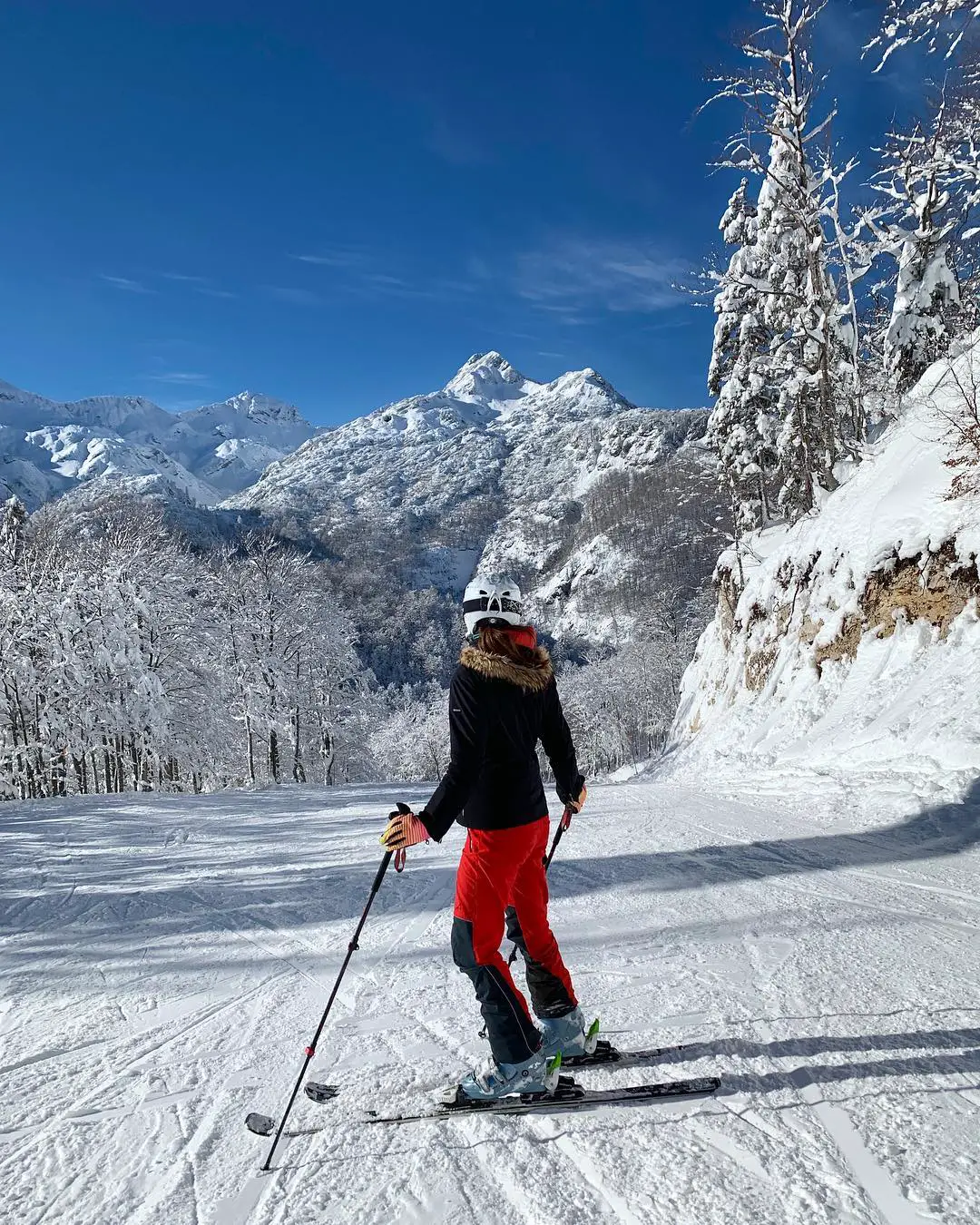
To name a few, my favorite blog posts are the following:
Encircled by high mountains, this picturesque village offers a plethora of hiking trails: Bohinjska Bistrica as it lists quite a number of spectacular hiking ideas in Bohinj Valley, a beautiful glacial valley favored by tourists and locals alike.
Exploring a most beautiful Alpine valley of Slovenia - hiking, climbing and fly-fishing in Logar Valley for holiday ideas in Logar Valley, where I personally note one of the most genuine and memorable experiences in the Slovenian mountains.
When Velika Planina dresses in purple to help you explore an extraordinary wonder at a high-Alpine plateau close to Ljubljana, where every spring endless fields of purple crocuses flood the whole plateau, coloring it purple.
Beautiful Alpine Slovenia in a time-lapse video, where you can watch my 3-minute time-lapse video of the Slovenian mountains - a project that sums over a year-and-a-half worth of videos collected from over a hundred of trails.
Up to Triglav over its North Face and down to the Krma Valley where I take readers on a two-day adventure from one valley to another across Triglav. And of course, there are many more.
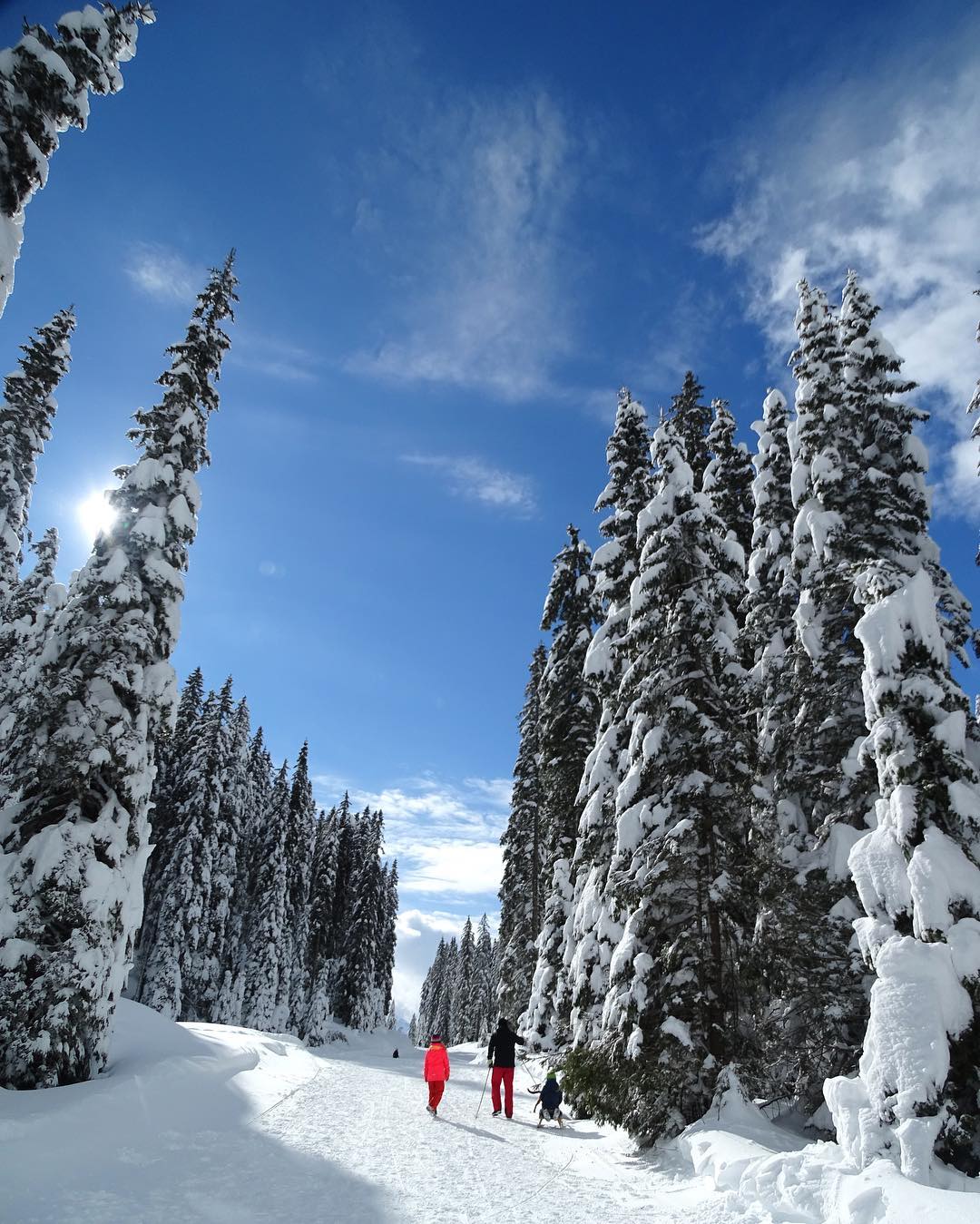
What has the experience of running the site taught you?
Probably the most important lesson I learned was to always produce excellent content. Not only in regard to providing the audience great stories, but also taking them through the places I talk about through breathtaking photos and videos. Plus, always to think of new, intriguing adventures not only for proven mountaineers, but also for average hikers that want to simply enjoy the spectacular landscapes Slovenia has to offer.
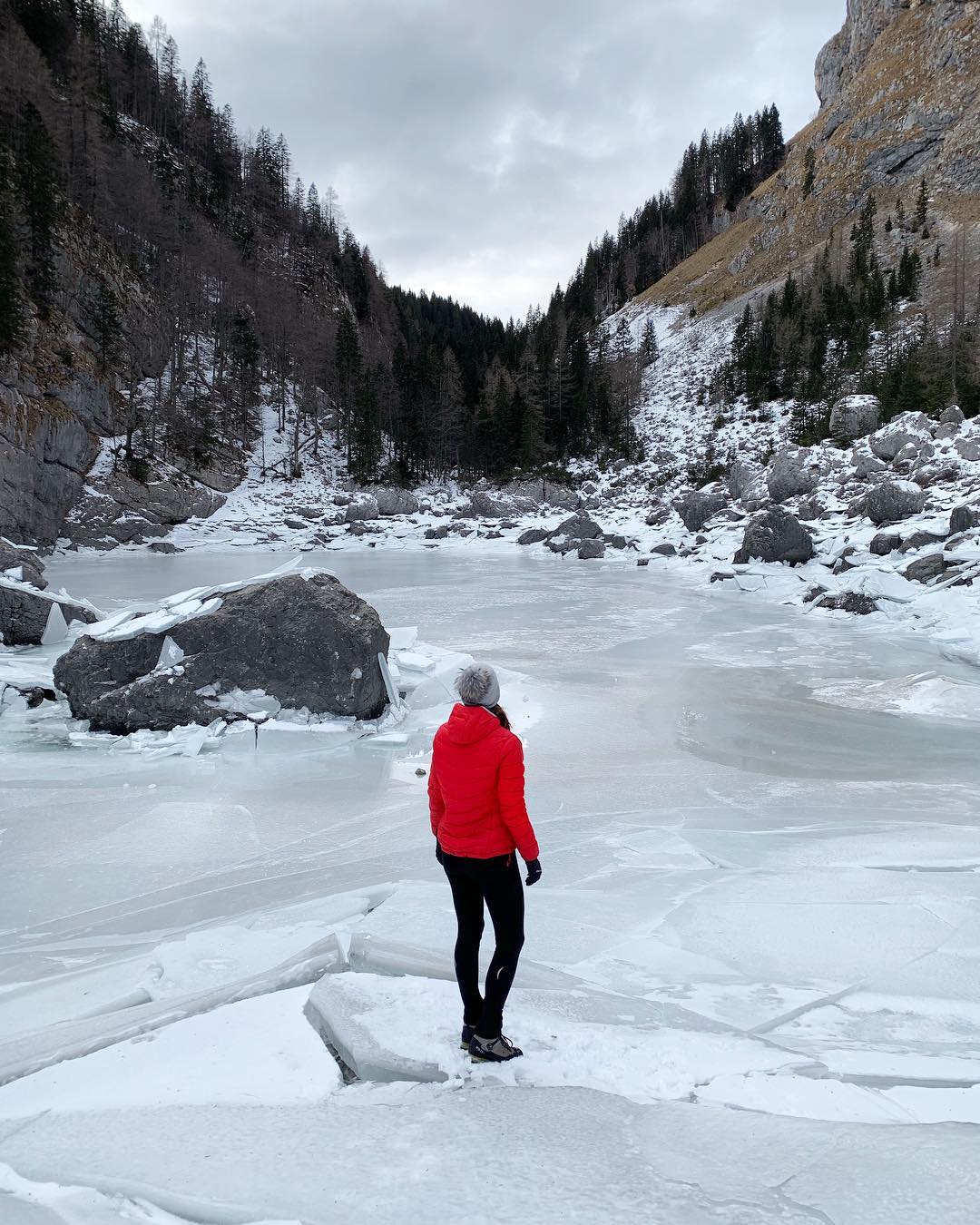
How important is Instagram to your work?
It’s nice to have it, since I do far more adventures than I have time to blog about. Therefore, most of my hikes are shown only on Instagram, with the very best and most interesting ones also on my blog. It’s a platform that can connect you with your audience in a more personal way, while it also allows you to grow your audience if you approach it the right way.
How long have you been offering tours?
I’ve been always happy to help my readers connect with a mountain guide if they needed one for a certain ascent in certain conditions, but I started offering tours myself last summer. The most popular is Triglav in all seasons and on all routes. It’s the highest mountain in Slovenia, and as such the most obvious choice either when you’re visiting the country for a week or you live there and haven’t found the courage to climb it yet on your own. Nevertheless, Triglav is indeed one of the most fascinating climbs in Slovenia and, must I say, never disappoints, not even those who’ve climbed it several times.
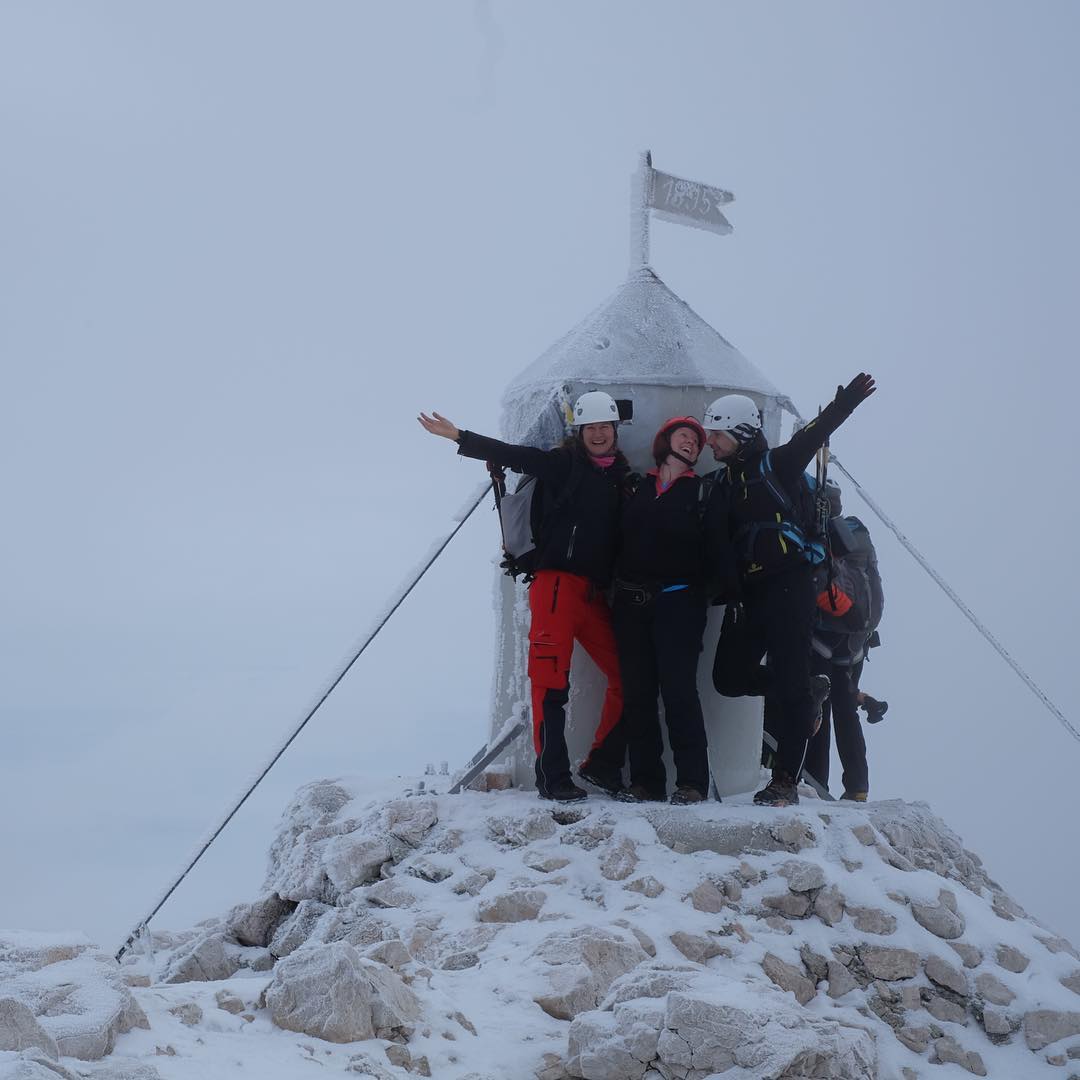
When is the best time of year to climb Triglav, if you’re not a regular climber, and when do you like to climb it?
The easiest time to climb Triglav is when there’s no snow on the way, meaning usually July – September. Even a little bit of snow brings extra hassle and the need to bring extra gear for snow conditions, especially when it’s combined with ice. I prefer climbing it in June, the end of September and October to avoid the crowds. I haven’t climbed it in serious winter conditions yet, when the steel cable is hidden underneath the snow, but I’d love to do that with the help of a mountain guide.
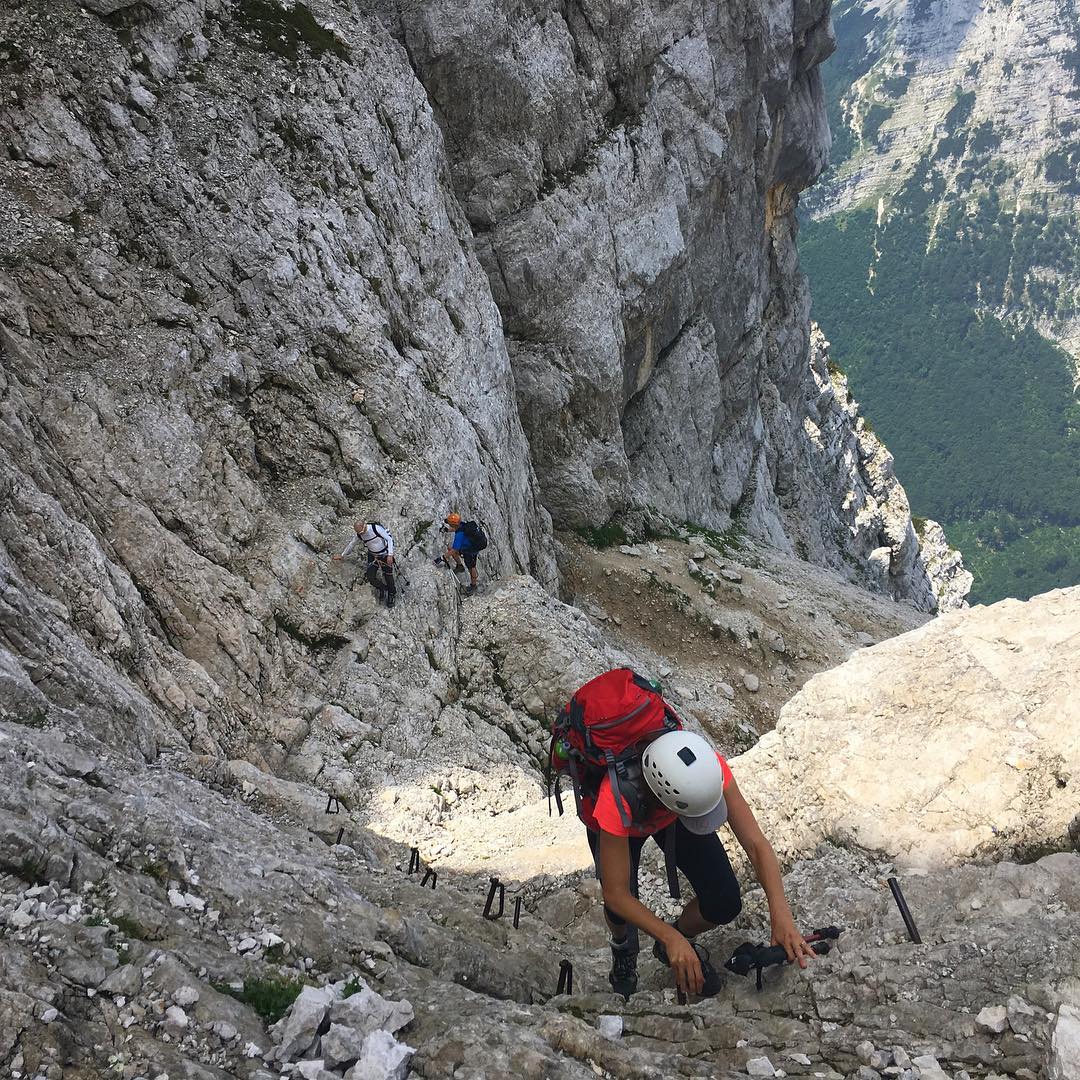
How do you feel about the way tourism is developing in Slovenia?
I love the fact that Slovenia is becoming more recognized in the world and more people are coming to see our wonderful country. In regard to service providers, particularly those working in mountaineering tourism, I like the fact that most of them are well-trained and internationally licensed mountain guides, thus assuring top-level safety and service.
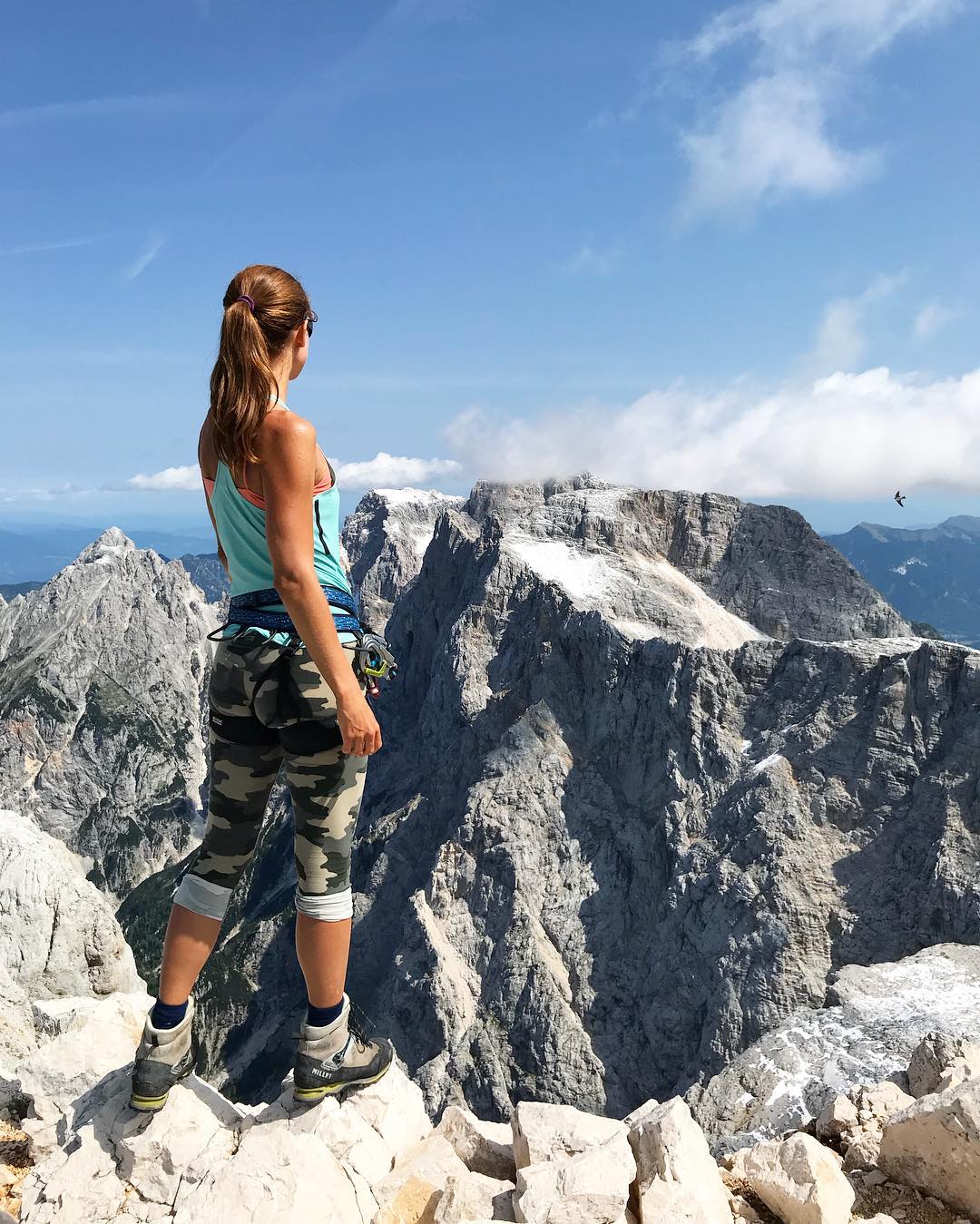
How would you like tourism to develop in the future?
More boutique small groups with respect for our land who visit Slovenia to enjoy incredible landscape, good food, and rich culture, while on the other hand also receive a great service. While I love the fact that the Slovenian mountains are accessible to anyone with the desire to climb them, it would be nice to add more service to the mountain huts for the more demanding guests. I would also love to see more mountain huts open all year round, more options in the food menu, nicer bathrooms with a possibility to shower, heated rooms, etc., which could as well be offered as an extra service as long as it’s available.
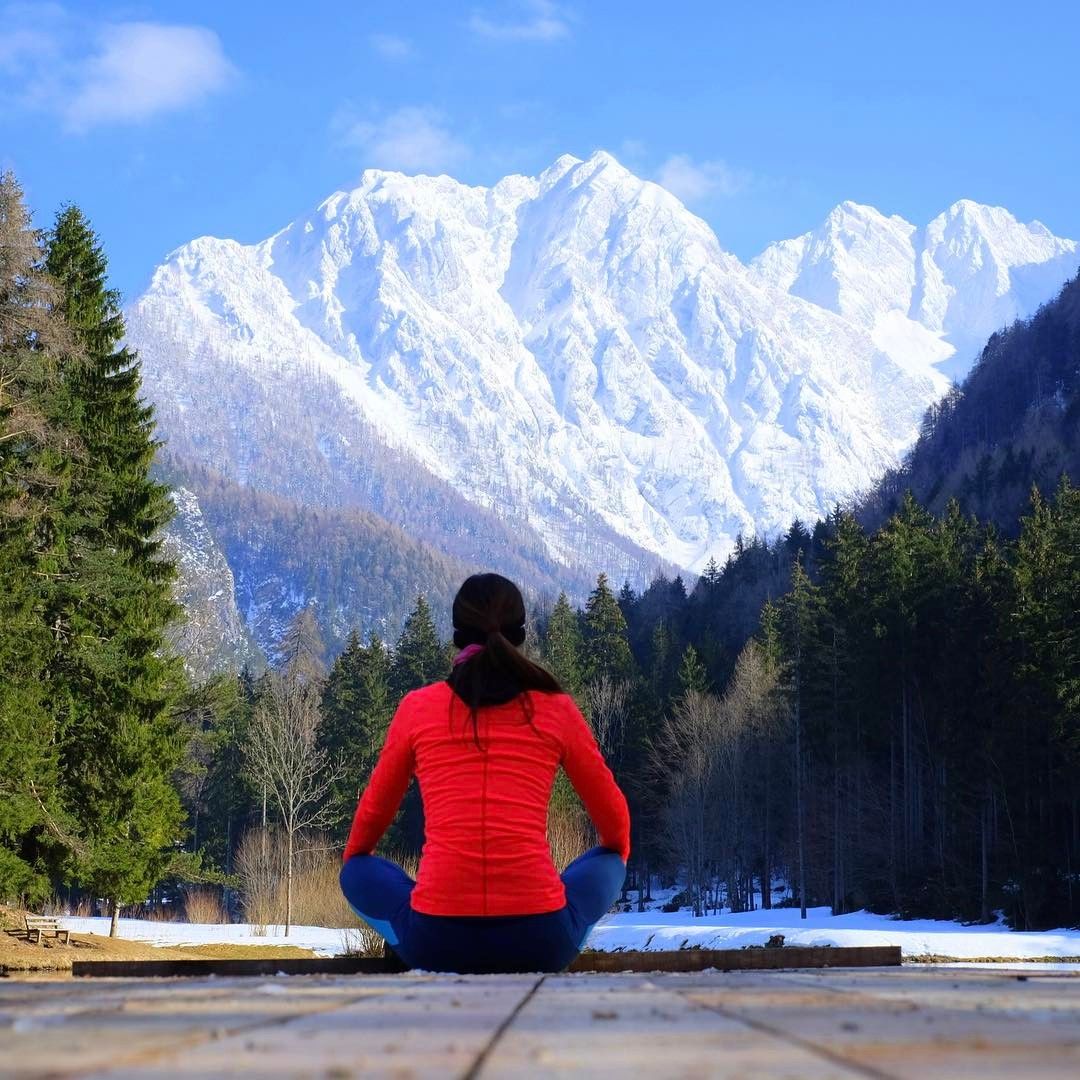
Finally, away from hiking and “work”, can you recommend a few things to our readers.
Places: Anything hidden from the main tourist attractions. I really love the Logar Valley for its beautiful landscapes, rivers, waterfalls, and, most of all, welcoming people. While the most memorable experience for me was to fly over the Julian Alps in a hot-air balloon.
Food & drink: Organic herbal tea made of flowers picked in the mountains, roasted lamb and potatoes, beef and mushroom soup, apple strudel, chocolate štruklji (served in the mountain hut Kofce in the Karawanks).
Sports events: Marathon Franja, Goni Pony, and Juriš na Vršič
Books: Čefurji Raus (Vojnović), Alamut (Bartol)
Movies: Gremo mi po svoje and Houston, imamo problem.
Music: Siddharta – Ledena, Napalm 3, Sfinga, Narava; Lamai – Spet te slišim.
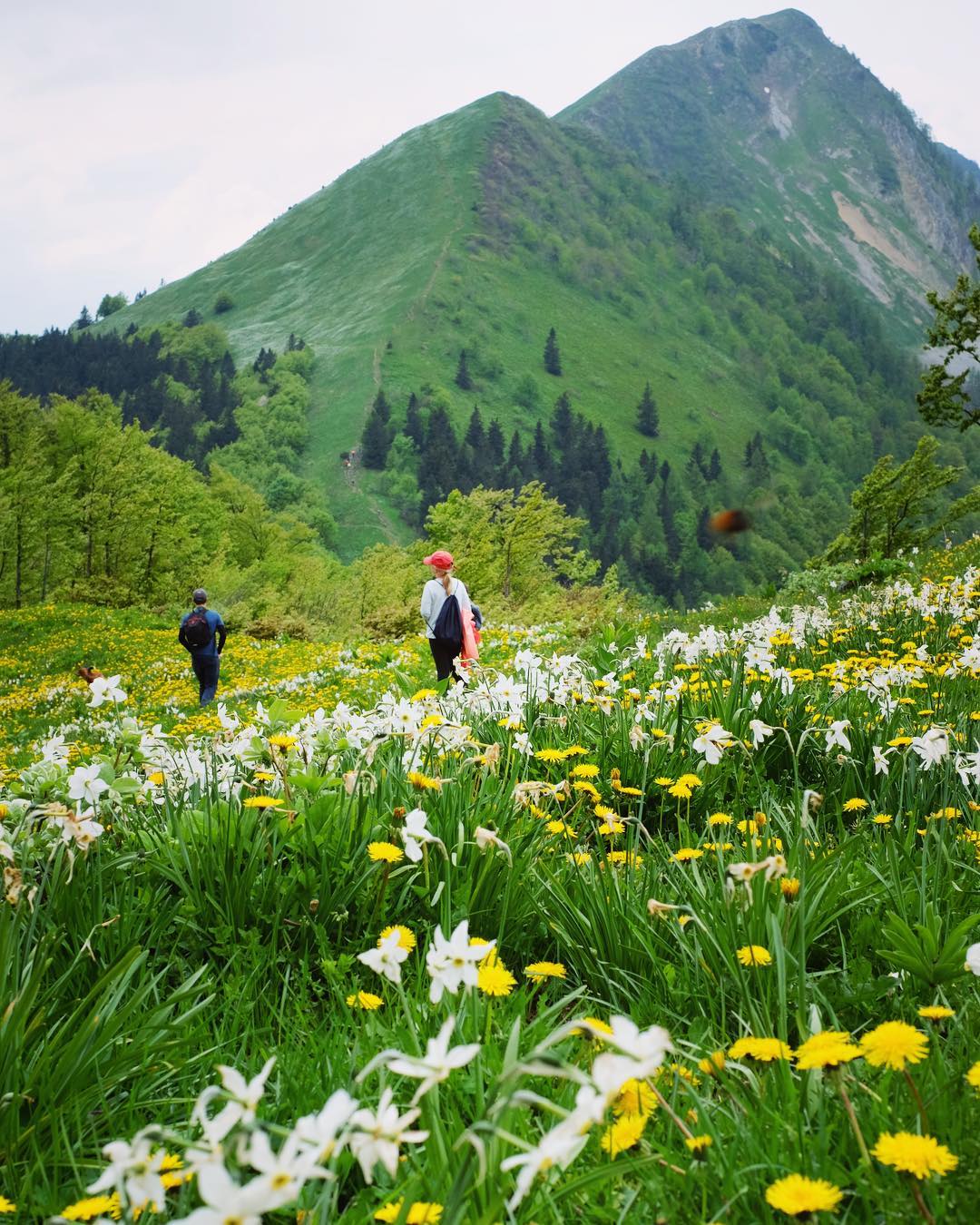
You can see more pictures and videos, read more adventures, and maybe even book a tour at Exploring Slovenia; and if you'd like to share your story with our readers, please get in touch at This email address is being protected from spambots. You need JavaScript enabled to view it.
STA, 23 January 2019 - Conventa 2019, the 11th exhibition for convention tourism in SE Europe, got under way at Ljubljana's Gospodarsko Razstavišče fairgrounds on Wednesday. The two-day meeting features 125 exhibitors from 15 countries and 178 invited guests from 44 countries.
Miha Kovačič, one of the chief organisers, told the press that Conventa's focus was on countries in Eastern and SE Europe. These are considered as developing and exotic destinations and are in high demand among the organisers of business trips.
He said that the meeting had become a must for many operators in the region, while the idea is also to attract as many new clients as possible each year so that new ties can be forged. As many as 90% of the foreign organisers of business meetings are new to Conventa this year.
The biggest increase was recorded among exhibitors from the Western Balkans, which is a result of a stabilisation of the region, Conventa co-founder Gorazd Čad also noted.
Meanwhile, Karmen Novarlič of the Slovenian Tourist Board highlighted the major potential that congress tourism holds for Slovenia.
An average convention guest spends at least three-times as much as a holiday guests, with a 2018 survey for Ljubljana for instance putting the average daily expenditure of convention guests at EUR 511.
The other key advantage of convention tourism is that it is not tied to the main tourism season. Two thirds of such guests come to Slovenia in periods other than the summer season.
Novarlič expects the industry to continue growing in Europe, with Slovenia having worked in recent years on being discovered as a convention destination.
Presenting a challenge in Ljubljana for example are conference as well as hospitality capabilities, as well as the capabilities of the Ljubljana airport.
The capital can presently host events with around 2,000 participants, provided that venues and hotels operate in a coordinated fashion, Jan Oršič of the Ljubljana Congress Office illustrated.
STA, 23 January 2019 - Ljubljana Castle, the capital's main tourist attraction, welcomed 1.316 million visitors in 2018, 57,000 shy of the record posted in 2017. The number of visitors to use the castle funicular on the other hand continued to grow, by another 7.4% to reach 539,000, the castle operator said on Wednesday.
Almost 73% of the visitors were tourists from abroad. Standing out are visitors from Italy, Great Britain, the US, Germany, Korea, Spain, France, the Netherlands, Croatia and Taiwan.
The round and triangular openings had different purposes. Photo: JL Flanner
Related: 25 Things to Know about Ljubljana Castle
The city-owned operator is also proud of the programme organised at the castle, with 551 events taking place last year, including the first grape picking in the vineyard planted on Castle Hill in 2016.
An important trend noted is the dispersal of visits beyond the main season, with visitor figures exceeding 1,000 in eight of the 12 months.
Related: Celica – Former Prison, Hostel, & Full Artistic Experience in Ljubljana’s Metelkova
Moreover highlighted were the operator's first six months in the capacity of the manager of Ljubljana's famous Celica youth hostel. The room-occupancy rate stood at 81% and 54 art events took place at the hostel in the second half of the year.
Ljubljanski Grad expects to finish 2018 in the black, assessing revenue at EUR 5.9m. It pointed out that the share has been increasing of market-secured revenue, the estimate for this year being 82%.
Related: What’s on in Ljubljana
22 January 2019 – The village of Slapnik in Goriška Brda has been abandoned for decades, but is set to get a new lease of life this year with the news that the BBC is to renovate some of the buildings and film a reality show there.
Slapnik, a settlement with 17 houses that once had around 80 residents, mostly farmers, lost its population to larger towns in the region, as well as to immigration to the US and Australia after WW2. Since 1985 is has been designated as part of Slovenia’s immovable cultural heritage, and become a curiosity for visitors, and those interested in the region’s architecture in particular.
According to Delo, the British Broadcasting Company will film a show in the village in which couples from around Europe will live in the renovated houses. Further details remain unknown, but it’s expected that around 20 episodes of the series will be filmed.
Slapnik, and the region in general, is expected to benefit from the attention, while the renovated buildings will provide more opportunities for further commercial activity in the village. A municipality official, Anita Manfreda, told the media that after the renovation and filming, expected to last two or three years, there are proposals to develop the area into a resort for guests wishing to relax in the peace and quiet of the countryside.
STA, 17 January 2019 - Its waters sparkling in the sun, the Alpine Lake Bled is considered the epitome of picture-perfect and millions have photographed the vista with the island and the little church perched on top. But look below the glistening surface, and the picture is much murkier.
The lake ecology has been deteriorating, mostly due to the surge in swimming, fishing and boating, and rapid development of the lake shoreline. The lake water has long been designated as good or acceptable, but by 2021 it may fall afoul of the water quality standards prescribed by the EU, according to the Environment Agency.
Tourism is putting pressure on local infrastructure
For waters to improve, it is necessary to reduce the intensity of the use of the lake area. "A sustainable improvement and stabilisation of the situation in the lake can only be achieved by removing the causes of pollution and by taking measures to reduce the intensity of the use of the lake area," said Špela Remec Rekar a limnologist (inland water researcher) at the Environment Agency who has been monitoring Lake Bled water quality for several years.
She notes that the number of tourist nights in Bled had almost trebled between 1994 and 2016. Traffic on and around the lake has surged, and there are more and more swimmers and fishermen. Infrastructure, including sewage, has not been keeping up with the increase in visitors.
Remec Rekar said that aside from improving sewage, traffic around the lake should be scaled back and the bird population reduced. But the most important measure would be to ban the feeding of fowl and fish.
Fish feed a problem for the water
Fish feeding has been a major factor in the deterioration of water quality. The law stipulates that each fisherman may bring in five kilo of carp fodder per day, which for Lake Bled amounts to over ten tons of nutrients being introduced to the water each year. This drives up phosphorous levels and supports the development of dangerous cyanobacteria.
The municipality is aware of the problem and is already mulling limiting carp feeding, but it says this is a process. "We have to join forces with all stakeholders and determine what is possible, sensible and feasible," said Tomaž Rogelj, the director of the Bled Tourism Office.
Last year the municipality bought an electric boat for cleaning the lake surface, which removes organic waste such as leaves as well as man-made pollutants. But Remec Remškar says that given the size of the problem, this is a negligible improvement.
STA, 14 January 2019 - Slovenia is not perceived as a destination with offerings for discerning guests willing to pay more. This follows from an analysis of online communication conducted by the Slovenian Tourist Board (STO).
The STO has analysed online opinions, questions and demand by travellers and tourists in Slovenia's target markets Austria, Germany, Italy, the UK, France, Switzerland and Benelux countries.
"Based on the latest research we find that Slovenia is perceived as a destination different from mass tourism but not as a destination with offerings for discerning guests or a destination where visitors are willing to pay more, nor even as a destination offering unique accommodation or experiences, which is the biggest challenge of Slovenian tourism," STO said.
The analysis found that destinations regularly perceived as "boutique" by online users are Paris, Venice, Italy, Greece and far-away islands and countries.
Slovenia is mentioned as such only in editorials or specialised articles, while users only rarely associate elements of exclusivity with the country.
Small, magical, hidden gem vs unnoticed, uninteresting and untouristy
When they do, the expressions they use are small, magical nature and a hidden gem. Suggestions of perception of exclusivity also appear in connection with the country's cuisine or glamping.
The users also mentioned some unique Slovenian sights such as the Postojna Cave.
On the down side, Slovenia is labelled as unnoticeable, overlooked, uninteresting until experienced and untouristy. Also mentioned was a mix of different styles and inconsistency of offerings.
Positive impressions refer to the quiet, beauty of nature and accessible prices, while negative ones mention crowds in some destinations and underdeveloped tourism such as in the fields of infrastructure or a lack of museums outside Ljubljana.
The most common key words associated with Slovenia are Bled and nature. The lakeside town is so popular that some tourists know Bled while they do not know the country it is located in.
Visitors most often recommend visiting the western part of the Alpine macro-destination. including Bled, Bohinj, and the Soča Valley, Postojna Cave, Ljubljana and Piran. They are disappointed by Portorož, Celje, Škofja Loka and Maribor.
The food is deemed as satisfactory with some above-average exceptions, while accommodation is perceived as not luxurious.
The most exceptional experiences associated with Slovenia are canyoning, visiting a vineyard, visiting caves, paragliding, cooking classes and food tours.
All our stories tagged tourism can be found here



